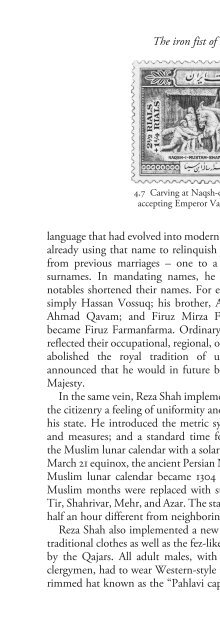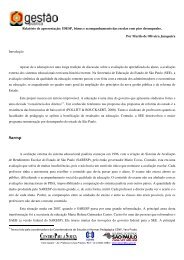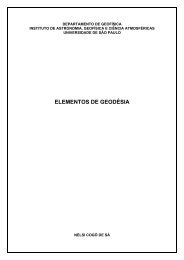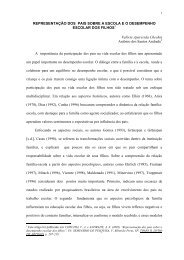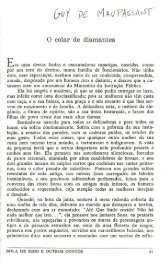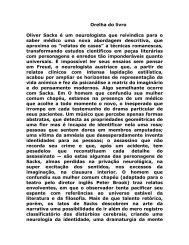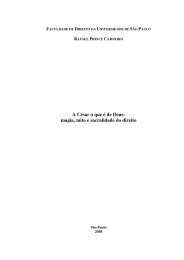- Page 2:
This page intentionally left blank
- Page 8:
A HISTORY OF MODERN IRAN ERVAND ABR
- Page 12:
In memory of the more than three hu
- Page 18:
Maps 1 Iran and the Middle East pag
- Page 22:
x Illustrations 7 Woman passing sol
- Page 26:
Figures 1 Class structure (labor fo
- Page 30:
xiv Chronology 1979 November Studen
- Page 34:
xvi Glossary pasdar guards qanat un
- Page 38:
xviii A political who’s who of mo
- Page 42:
xx A political who’s who of moder
- Page 46:
xxii A political who’s who of mod
- Page 50:
xxiv A political who’s who of mod
- Page 56:
Preface We view the past, and achie
- Page 60:
TAJIKISTAN CHINA BLACK SEA Istanbul
- Page 64:
Introduction “The past is a forei
- Page 68:
Introduction 3 primary and secondar
- Page 72:
Introduction 5 the 1990s more than
- Page 76:
Introduction 7 between social and c
- Page 80:
“Royal despots”: state and soci
- Page 84:
“Royal despots”: state and soci
- Page 88:
“Royal despots”: state and soci
- Page 92:
“Royal despots”: state and soci
- Page 96:
“Royal despots”: state and soci
- Page 100:
“Royal despots”: state and soci
- Page 104:
“Royal despots”: state and soci
- Page 108:
“Royal despots”: state and soci
- Page 112:
“Royal despots”: state and soci
- Page 116:
“Royal despots”: state and soci
- Page 120:
“Royal despots”: state and soci
- Page 124:
“Royal despots”: state and soci
- Page 128:
“Royal despots”: state and soci
- Page 132:
Reform, revolution, and the Great W
- Page 136:
Reform, revolution, and the Great W
- Page 140:
Reform, revolution, and the Great W
- Page 144:
Reform, revolution, and the Great W
- Page 148:
Reform, revolution, and the Great W
- Page 152:
Reform, revolution, and the Great W
- Page 156:
Reform, revolution, and the Great W
- Page 160:
Reform, revolution, and the Great W
- Page 164:
Reform, revolution, and the Great W
- Page 168:
Reform, revolution, and the Great W
- Page 172:
Reform, revolution, and the Great W
- Page 176: Reform, revolution, and the Great W
- Page 180: Reform, revolution, and the Great W
- Page 184: Reform, revolution, and the Great W
- Page 188: chapter 3 The iron fist of Reza Sha
- Page 192: The iron fist of Reza Shah 65 succu
- Page 196: The iron fist of Reza Shah 67 seven
- Page 200: The iron fist of Reza Shah 69 Table
- Page 204: The iron fist of Reza Shah 71 three
- Page 208: The iron fist of Reza Shah 73 stamp
- Page 212: The iron fist of Reza Shah 75 Reza
- Page 216: The iron fist of Reza Shah 77 1855.
- Page 220: The iron fist of Reza Shah 79 3.3 S
- Page 224: The iron fist of Reza Shah 81 4 Sta
- Page 230: 84 A History of Modern Iran Table 4
- Page 234: 86 A History of Modern Iran station
- Page 238: 88 A History of Modern Iran Table 5
- Page 242: 90 A History of Modern Iran The reg
- Page 246: 92 A History of Modern Iran hand, t
- Page 250: 94 A History of Modern Iran its bri
- Page 254: 96 A History of Modern Iran his mag
- Page 258: 98 A History of Modern Iran working
- Page 262: 100 A History of Modern Iran masses
- Page 266: Table 7 Prime ministers (August 194
- Page 270: 104 A History of Modern Iran Qavam
- Page 274: 106 A History of Modern Iran office
- Page 278:
108 A History of Modern Iran suppor
- Page 282:
110 A History of Modern Iran 1946 b
- Page 286:
112 A History of Modern Iran Consti
- Page 290:
114 A History of Modern Iran charis
- Page 294:
116 A History of Modern Iran active
- Page 298:
118 A History of Modern Iran of the
- Page 302:
120 A History of Modern Iran “chi
- Page 306:
122 A History of Modern Iran The 19
- Page 310:
124 A History of Modern Iran Table
- Page 314:
126 A History of Modern Iran intell
- Page 318:
128 A History of Modern Iran exerti
- Page 322:
130 A History of Modern Iran lucrat
- Page 326:
132 A History of Modern Iran Table
- Page 330:
134 A History of Modern Iran Table
- Page 334:
136 A History of Modern Iran 5.2 Se
- Page 338:
138 A History of Modern Iran office
- Page 342:
140 A History of Modern Iran 0.1% 1
- Page 346:
142 A History of Modern Iran rates
- Page 350:
144 A History of Modern Iran orient
- Page 354:
146 A History of Modern Iran share)
- Page 358:
148 A History of Modern Iran rarely
- Page 362:
150 A History of Modern Iran announ
- Page 366:
152 A History of Modern Iran wheat,
- Page 370:
154 A History of Modern Iran party,
- Page 374:
156 A History of Modern Iran and Pa
- Page 378:
158 A History of Modern Iran studen
- Page 382:
160 A History of Modern Iran 6 The
- Page 386:
162 A History of Modern Iran cadets
- Page 390:
164 A History of Modern Iran and po
- Page 394:
166 A History of Modern Iran ruling
- Page 398:
168 A History of Modern Iran Govern
- Page 402:
8 Stamps from the Islamic Republic
- Page 406:
172 A History of Modern Iran 8.4 St
- Page 410:
174 A History of Modern Iran 8.5 (c
- Page 414:
176 A History of Modern Iran divisi
- Page 418:
178 A History of Modern Iran the As
- Page 422:
180 A History of Modern Iran close
- Page 426:
182 A History of Modern Iran the Re
- Page 430:
184 A History of Modern Iran goods
- Page 434:
186 A History of Modern Iran Khatem
- Page 438:
188 A History of Modern Iran (dialo
- Page 442:
190 A History of Modern Iran gave I
- Page 446:
192 A History of Modern Iran Yet an
- Page 450:
194 A History of Modern Iran thousa
- Page 454:
Notes INTRODUCTION 1. Conventional
- Page 458:
198 Notes to pages 16-24 28. S. Ben
- Page 462:
200 Notes to pages 31-42 Su fis, 70
- Page 466:
202 Notes to pages 52-57 44. J. Hon
- Page 470:
204 Notes to pages 65-73 7. British
- Page 474:
206 Notes to pages 89-98 56. A. Das
- Page 478:
208 Notes to pages 109-20 33. Briti
- Page 482:
210 Notes to pages 133-51 22. E. Ro
- Page 486:
212 Notes to pages 159-76 11. J. Gu
- Page 490:
214 Notes to pages 189-93 63. M. Kh
- Page 494:
216 Bibliography Diba, L., Royal Pe
- Page 498:
Further reading GENERAL Avery, P.,
- Page 502:
220 Further reading Majd, M., The G
- Page 506:
222 Further reading Arjomand, S., T
- Page 510:
Index Abadan 56 Abadan cinema fire
- Page 514:
226 Index Jangalis (Men of the Fore
- Page 518:
228 Index Wassmus, Wilhelm 60 women


